Most creatives don’t understand the numbers of their business. When I started I was one of them. In fact, all my prices during the early years of business where calculated using “The Dartboard Method.” Throw a dart at the board, where it hit is where I priced it. This is resulted in prices that were usually too low and/or usually profitable only by sheer luck.
Not knowing your numbers is a problem, since business is run by NUMBERS! It is time to stop using “The Dartboard Method.” Let’s learn how to calculate production cost and build in guaranteed profitability so you can start improving business!
Annual Overhead Costs
The first number you need to know is your annual overhead cost. How much money does your business need each year to support itself? This is calculated by adding up all of the annual costs of your business and be sure to include monthly income for yourself.
Below is a hypothetical example of a freelancer who works out of their house and outsources work to some other freelancer friends (i.e. “Contractors” in the table below).

Production Hours Per Year
Next we need to know how many production hours you have available each year. A full-time job is usually considered “40 hours per week” which equals 2,080 hours per year (40 x 52 weeks per year). But let’s be serious, you are not producing billable work 40 hours per week. You have other responsibilities in your business: accounting, sales, operations etc. All of which take your time each week. We need to account for those and determine what amount of our time is available to actually produce work for our clients.
Estimate the percentage of weekly hours you have available to do “billable work” for your clients and multiply by 2,080 to yield your “production hours per year.” For example, if you think 75% of your time is available for production work, then multiply 2,080 by 0.75 to yield 1,560.
Below are some examples of how those production hours might break down for a freelancer working from a home office.
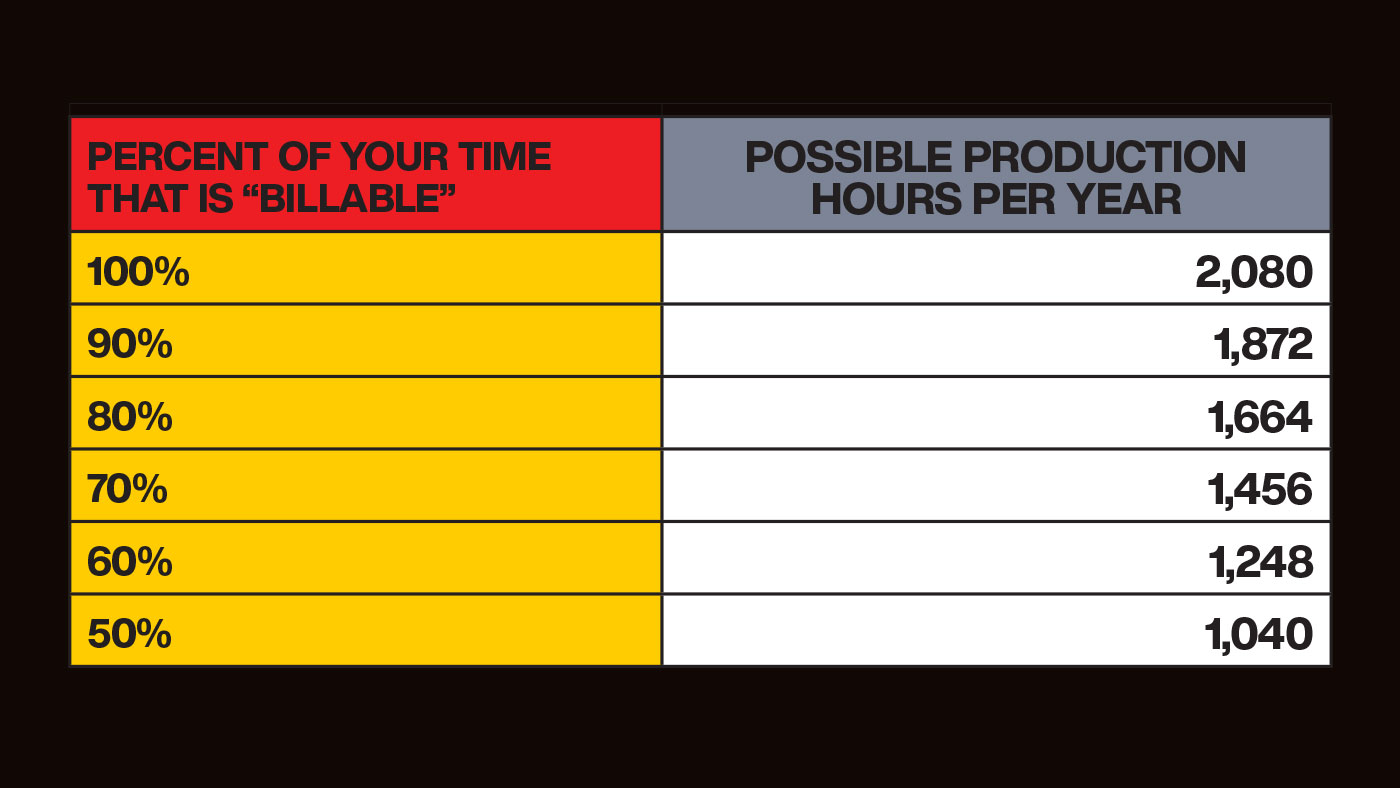
Calculate Your “Break Even” Hourly Rate
Now that we understand the first couple numbers, we can calculate our “hourly burn rate.” In other words, how much money do we need to charge per hour to break even in our business? Divide your annual overhead costs by your number of production hours per year.
Below is an example for our freelancer, working from home with 75% of their workweek available for billable work. In this situation, our freelancer needs to charge $41.66 per hour (and do 1,560 hours of work each year) to “break even” in their business.
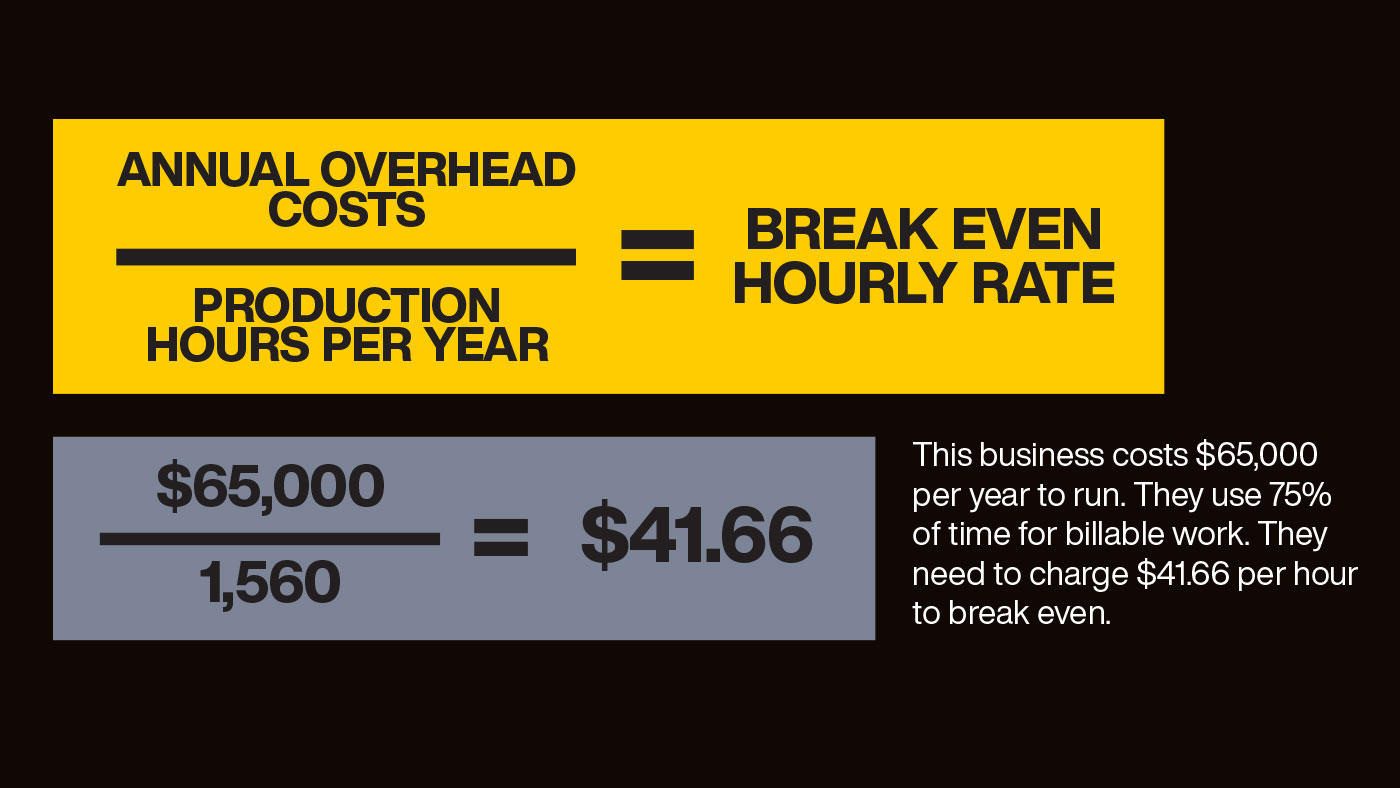
Estimate How Long a Project Will Take
When you get a new project, estimate how long it will take to complete the work. I’ve found that the best way to approach creating this estimate is to list each meeting, round, and presentation, then throw in some time for project management and you usually can get a pretty accurate estimate of how long a project will take. Breaking the project down like this really helps you see all of the tasks required to execute on the work.

Calculate Your Production Cost
Now we are ready to calculate your production cost. By taking the hours estimate for our project and multiplying it by our “break even” hourly rate, we can calculate how much the project will cost us to produce. But remember, this is just our cost to produce the work. There is no profit in this number. We’ll get to that in a minute.
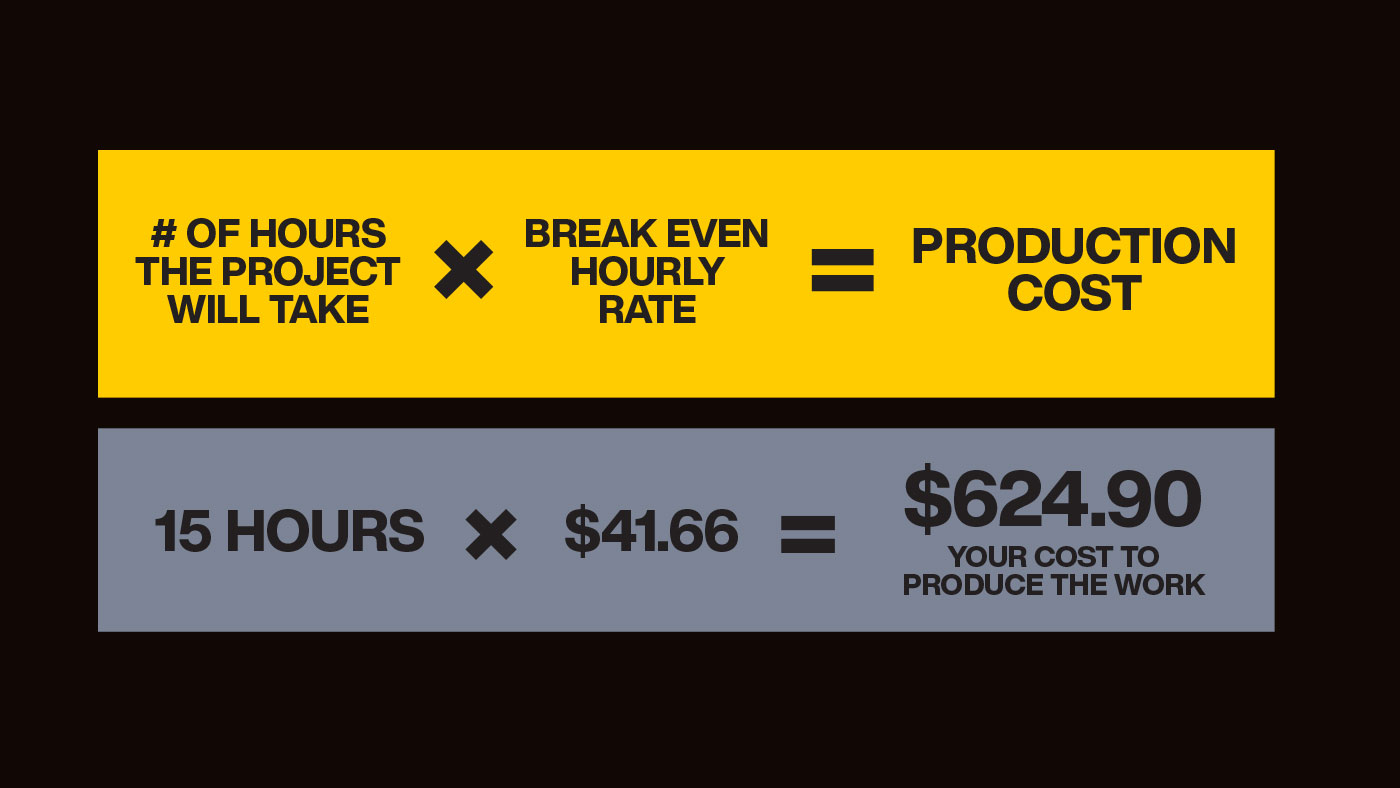
This is NOT your price. You still need to add padding and profit!
Add Padding
What if things don’t go as smoothly as you hope? You need to pad your production cost number. I usually recommend padding your number by 10-15% to cover any unforeseen hiccups in the project. If you don’t feel like your hours estimate is accurate for any reason, or if there are still some “unknowns” in the project scope, you may consider increasing your padding much higher (25-50%+ isn’t out of the question, just to be safe).
To add padding to your price, take your production cost number and multiply it by the padding percentage, then add that amount back to the production cost number. In the example below we are padding our production cost by 15% to insulate us from any unknown challenges that come in the project.
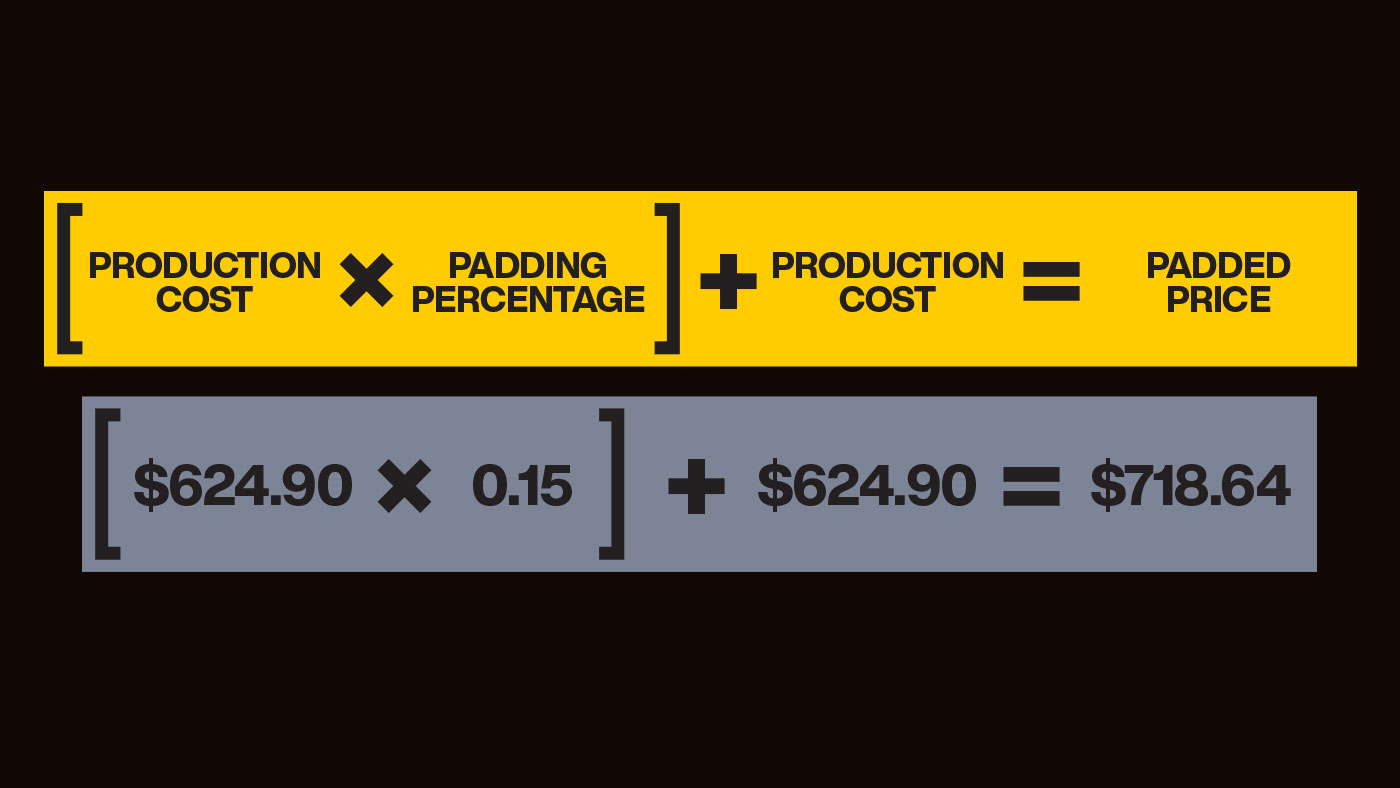
This is NOT your price. You still need to add padding and profit!
Add Profit
Question: How much profit should you include in your price?
Answer: As much as you can! You are in business to make money! However, your profit margin will be limited based on your client’s budget, fair market value, and your reputation. Each of these items will affect your ability to close a project at your chosen price.
My recommendation is to choose a profit margin somewhere between 30 and 100% and go UP from there. For this example, let’s say we choose to include a 50% profit margin. We can calculate our profitable price the same way we calculated our padded price. Take your padded price and multiply it by your profit percentage then add that amount back to the padded price. This will yield your profitable price. The example below uses a 50% profit margin added to our $718.64 padded price.
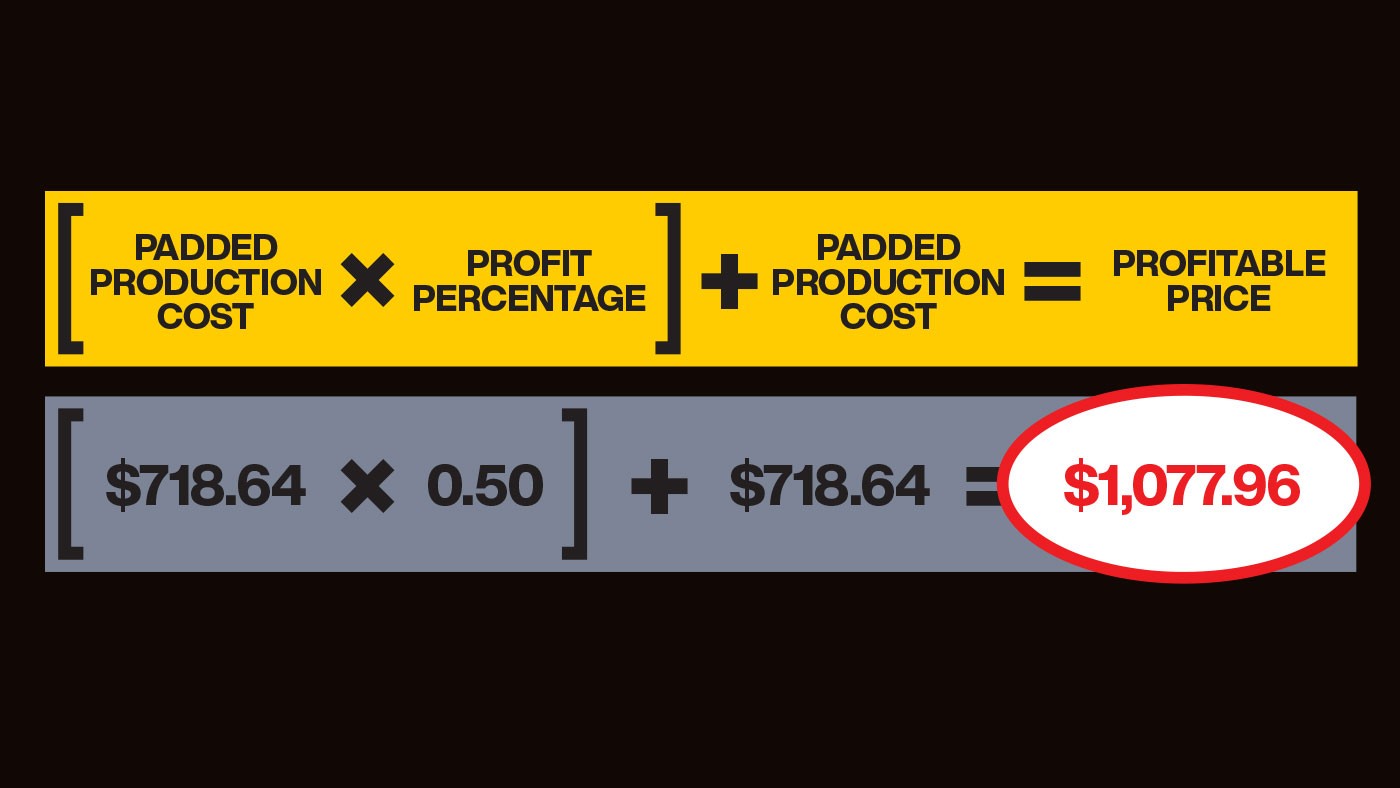
$1,077.96! Round it up to $1,100 and this may be your price!
But again, push that profit margin up until you get price resistance from your clients and don’t feel bad if you have a high profit margin! Your market value is equal to the amount someone is willing to pay you. Don’t be afraid to push up your prices!
If your client says “yes” to it, then that is your value and NEVER feel bad about it!












